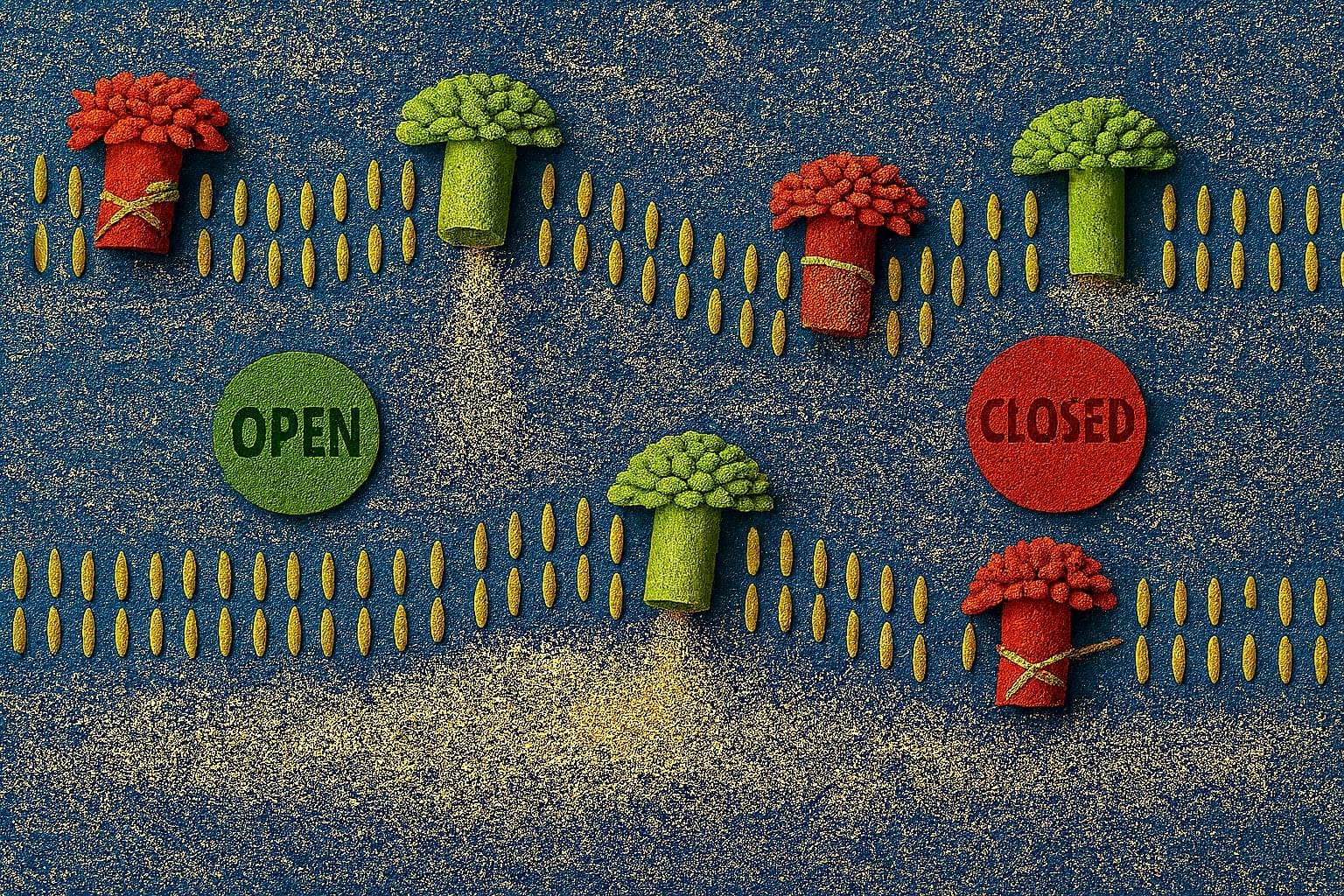Experts warn early dementia signs are often dismissed as ageing. Here are seven warning signs and why acting early matters.



Alzheimer’s disease (AD) is a neurodegenerative disease marked by the accumulation of toxic amyloid-beta (Aβ) oligomers. These oligomers are thought to cause synaptic dysfunction and contribute to neurodegeneration. CT1812 is a small-molecule sigma-2 receptor antagonist that is currently being investigated and tested as a potential disease-modifying treatment for AD. CT1812 acts by displacing Aβ oligomers into the cerebrospinal fluid and preventing their interaction with receptors on neurons. Preclinical studies and early clinical trials of CT1812 show promising results and provide evidence for its potential to slow AD progression. This review outlines the role of Aβ oligomers in AD, CT1812’s mechanism of action, and the effectiveness and limitations of CT1812 based on preclinical and clinical studies.

A Japanese research team has successfully reproduced the human neural circuit in vitro using multi-region miniature organs known as assembloids, which are derived from induced pluripotent stem (iPS) cells. With this circuit, the team demonstrated that the thalamus plays a crucial role in shaping cell type-specific neural circuits in the human cerebral cortex.
These findings were published in the journal Proceedings of the National Academy of Sciences.
Our brain’s cerebral cortex contains various types of neurons, and effective communication among these neurons and other brain regions is crucial for activating functions like perception and cognition.

This case-control study found that adults with schizophrenia had significantly greater frontal cortex serotonin release than healthy controls, and greater release correlated with more severe negative symptoms.
Question Is serotonin release altered in vivo in schizophrenia, and is it associated with negative symptom severity?
Findings In this case-control neuroimaging study that included 54 adults, frontal cortex serotonin release was significantly greater in the 26 people with DSM-5 schizophrenia compared with 28 matched healthy controls. In schizophrenia, greater frontal cortex serotonin release was associated with more severe baseline negative symptoms.
Meaning Findings suggest that serotonergic dysfunction in the pathophysiology of schizophrenia was associated with negative symptoms, identifying the regulation of serotonergic neurotransmission as a potential target to treat negative symptoms.

Liafensine was efficacious and well tolerated in ANK3-positive patients with treatment-resistant depression, with clinically meaningful and statistically significant improvements over placebo, highlighting ANK3 as a predictive genetic biomarker for liafensine.
Question Does the newly discovered ANK3 pharmacogenomic biomarker predict the response of patients with treatment-resistant depression (TRD) to liafensine, a triple reuptake inhibitor, despite failure in a non–biomarker-selected TRD patient population in prior phase 2b trials?
Findings In this randomized clinical trial including 189 ANK3-positive patients with TRD, liafensine demonstrated a 4.4-point Montgomery-Åsberg Depression Rating Scale improvement over placebo, a clinically meaningful and statistically significant difference.
Meaning This represents a first successful genetic biomarker-guided clinical trial in psychiatry, advancing a new treatment for TRD and providing a new path for developing precision medicines in the field.

“Ultra-refractory epilepsy (URE) is a newly described form of extremely difficult-to-treat epilepsy. In our study of 62 patients, all had already failed at least six different treatment attempts, including medications, brain surgery, or nerve stimulation. Most patients continued to have frequent seizures despite all available therapies, and only a small minority achieved long-term seizure freedom. These findings show that URE is a severe condition with a major unmet medical need, highlighting the importance of developing new treatment strategies.”
Read this original article from Epilepsia Open Journal at doi.org/10.1002/epi4.70196.
Objective Drug-resistant epilepsy (DRE) is defined as the failure of two antiseizure medications (ASMs) to achieve complete seizure control, affecting approximately 30% of epilepsy patients. In some cases, additional ASMs and surgical approaches are also unsuccessful. Ultra-Refractory Epilepsy (URE) is a newly described entity, characterized by the failure of six distinct epilepsy treatment strategies, including ASMs, surgical resection, and neurostimulation techniques. This study aimed to analyze demographic and clinical data of URE patients managed at the Brno Epilepsy Center, a member of the European Reference Network (ERN)—EpiCARE.

Parkinson’s disease (PD) is an age-related, progressive neurodegenerative disorder. The hallmark of PD pathogenesis is the Lewy bodies (LBs) that accumulate in neurons in the substantia nigra region of the brain, damaging these neurons and leading to the motor symptoms of the disease. α-synuclein (α-syn), a misfolded protein, aggregates and forms fibrils, which leads to the formation of LBs. The exact molecular mechanism behind this aggregation process is yet to be uncovered. With an increasing number of elderly patients suffering from Parkinson’s and other neurodegenerative diseases worldwide, it is important to understand the aggregation process, find potential therapeutic targets to mitigate or inhibit the aggregation, and slow down the disease progression.
Liquid-liquid phase separation (LLPS), a process where a uniform mixture spontaneously divides into two liquid phases with differing component concentrations, is often considered the reason behind α-syn aggregation. Even though LLPS of α-syn was previously reported, the question remains: are they involved in catalyzing the early stage of aggregation? Ubiquilin-2 (UBQLN2) protein, mainly involved in maintaining protein homeostasis, also undergoes LLPS under certain physiological conditions. Interestingly, it is known to be associated with several neurodegenerative diseases.
Are liquid droplets formed by UBQLN2 catalyzing the α-syn protein aggregation? A team of researchers decided to unravel the involvement of UBQLN2 in α-syn aggregation and fibril formation. “By uncovering the mechanisms that trigger the aggregation process, we hope to find new ways to prevent it and ultimately contribute to the development of disease-modifying treatments,” mentioned the senior author of the study. The study was published in The EMBO Journal.

Scientists found that nanopores’ electrical charges control how ions flow and when pores temporarily shut down. The discovery could allow engineers to design nanopores that “learn” like synapses for next-generation computing.
Pore-forming proteins appear across many forms of life. In humans, they help protect the body by supporting immune defenses. In bacteria, they often function as toxins that create openings in cell membranes. These natural pores regulate the movement of ions and molecules, and their precise control over molecular transport has made them valuable in biotechnology, including DNA sequencing and molecular sensing.
Unpredictable Behavior in Ion Flow.

Researchers have found a way to control protein levels inside different tissues of a whole, living animal for the first time. The method lets scientists dial protein levels up or down with great precision during the animal’s entire life, a technological advance which can help them study the molecular underpinnings of aging and disease.
Scientists at the Center for Genomic Regulation in Barcelona and the University of Cambridge successfully tested the technique by controlling how much protein was present in the intestines and neurons of the nematode worm Caenorhabditis elegans. Their findings are described in the journal Nature Communications.
Gene Therapy And A New Era Of Neuroscience — Dr. Norman Putzki, MD — SVP, Global Clinical Development Head, and U.S. Development Site Head, Novartis.
Dr. Norman Putzki, MD is Senior Vice President, Global Clinical Development Head, and U.S. Development Site Head at Novartis (https://www.novartis.com/) where he oversees global teams working on next-generation gene therapies, RNA-based medicines, targeted biologics, and innovative small molecules.
Dr. Putzki most recently served as Global Head of Development for Neuroscience and Gene Therapy at Novartis, where he oversaw one of the world’s most ambitious pipelines aimed at transforming the lives of patients with neurological, neuromuscular, and rare genetic diseases.
A physician–scientist by training, with an MD from University of Duisburg Essen, Dr. Putzki has built a career at the intersection of clinical medicine, translational research, and large-scale drug development.
Before joining Novartis, Dr. Putzki led programs across multiple therapeutic areas at Biogen Idec and has played key roles in advancing clinical treatments for conditions long considered intractable including MS and Parkison’s disease.